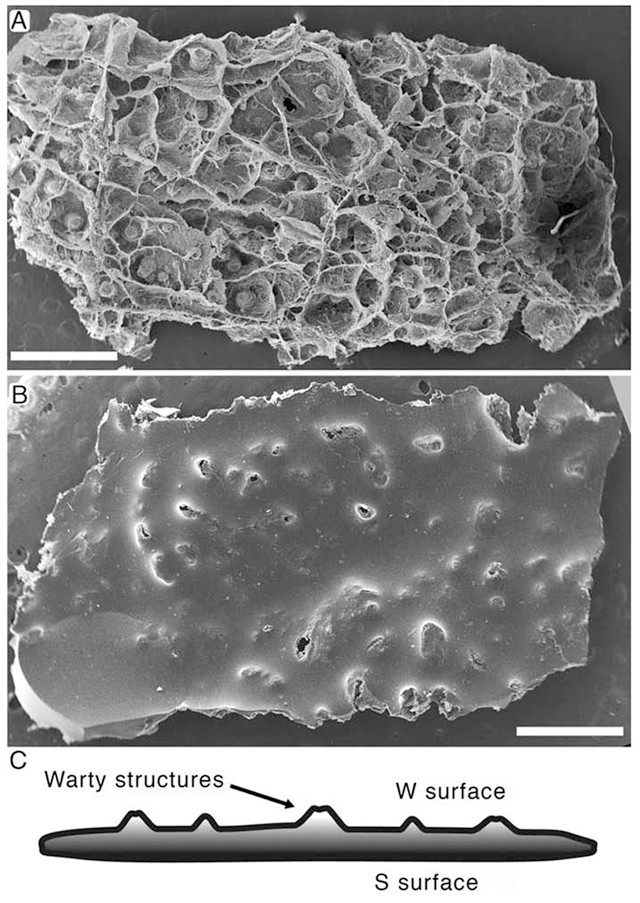
by Lucas Joel Monday, November 2, 2015

Scanning electron microscope images of macroscopic organic warty sheets showing ridges and warts. Scale bars represent 1 millimeter. Credit: Phoebe Cohen.
Between about 730 million and 635 million years ago, during the Cryogenian Period of the Late Proterozoic, Earth is thought to have been almost completely covered in ice twice, events that scientists have termed “Snowball Earth” glaciations. The first global glaciation, the Sturtian, lasted from 730 million to 700 million years ago, and the second, the Marinoan, lasted from 660 million to 635 million years ago. Both glaciations likely put severe limitations on the ability of life — predominately microorganisms — to thrive.
But the discovery of macroscopic organic warty sheets (MOWS) in 662-million- to 635-million-year-old limestones in Mongolia is revealing that at least some life may have fared better between the glaciations and into the Marinoan — a time thought to be mostly devoid of fossils.
The MOWS — so-named because the fossil is a flat sheet punctuated by wart-shaped structures and ridges, features the fossil shares with modern species of red algae, which today exhibit “warty reproductive structures called conceptacles [that] emerge on one surface” — are described in Palaios by Phoebe Cohen of Williams College in Massachusetts and colleagues.
If the MOWS are indeed akin to modern red algae, this would place them in the eukaryotic group Rhodophyta, the oldest eukaryotic lineage in the fossil record. This assignment “may indicate that the Rhodophyta clade continued to diversify and explore new niches during the Cryogenian nonglacial interlude,” the team wrote.
© 2008-2021. All rights reserved. Any copying, redistribution or retransmission of any of the contents of this service without the expressed written permission of the American Geosciences Institute is expressly prohibited. Click here for all copyright requests.